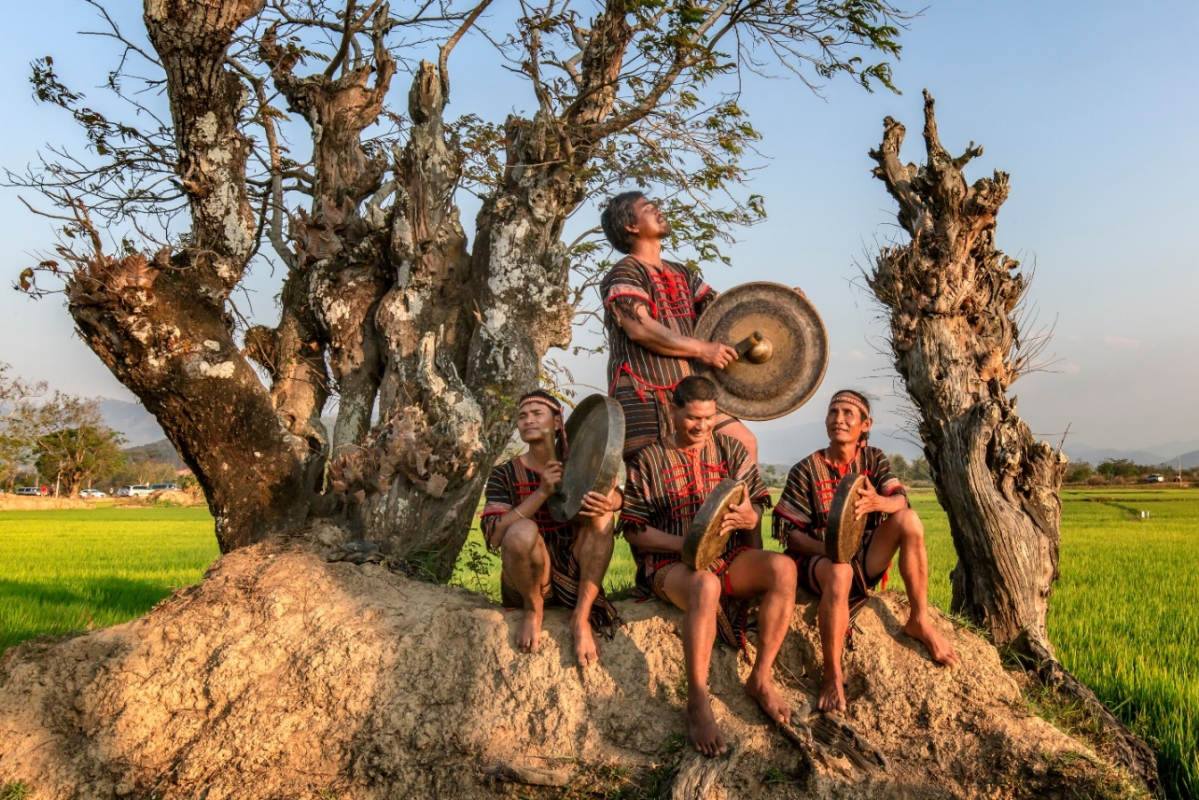1. Meaning of The Name Buôn Ma Thuột
The name Buôn Ma Thu holds significance in the history of the region before it became the largest city in the Central Highlands of Vietnam. Do you want to know the meaning of this name? Buôn Ma Thuột is a city in Đắk Lắk Province. The name originates from a village (buôn) of the Êđê people. In the late 19th century, this land had only one village with around 50 longhouses (traditional houses of the Êđê people), each housing 30 to 40 people. The leader of the village was Tù trưởng Ama Thuột, located near the Ea Tam stream.
By the early 20th century, this land was no longer a single village but a gathering place for dozens of other villages that developed and prospered. However, Buôn Ma Thuột remained a prominent village under the leadership of Ama Y Thuột.
The name Buôn Ma Thuột derives from this history. It means “the village of Ama Y Thuột,” which is the village of the father Y Thuột. In the Êđê language, Ama means father, and Y Thuột refers to the son named Thuột. Buôn Ma Thuột is a shortened name, signifying “the village of the father, Y Thuột.”
2. When was Buôn Ma Thuột found?
The land of Buôn Ma Thuột has existed since ancient times. The city of Buôn Ma Thuột is located at an average elevation of 500 meters above sea level, with a relatively flat and gentle terrain sloping from northeast to southwest. It is characterized by numerous rivers, streams, and small lakes. The region has fertile red basaltic soil, which is advantageous for long-term human settlement and the cultivation of crops, especially industrial crops and cereals. The natural grasslands in the area are extensive and suitable for large-scale livestock farming.
Buôn Ma Thuột has a rich and ancient history. From an archaeological perspective, it has been confirmed to have existed for at least 4,000 years, as evidenced by traces of prehistoric settlements and agriculture. In historical records such as Đại Nam thực lục and Đại Nam liệt truyện, this area is known as the territory of two nations, Thủy Xá and Hỏa Xá, and is considered the ancestral homeland of the Êđê, Mnông, and Gia Rai ethnic groups.
3. How many ethnic groups live in Buôn Ma Thuột?
The city of Buôn Ma Thuột covers a natural area of 37,710 hectares and has 21 administrative units (8 communes and 13 wards), with a population of over 380,000 people.
This city can be seen as a miniature Vietnam, as it is home to 40 out of the 54 brotherly ethnic groups living together. The Kinh people make up 85% of the city’s population, while the remaining population consists of ethnic minority groups. The Tày, Thái, Hoa, and Gia Rai ethnic groups are the next largest among the indigenous ethnic groups, with the ê people coming in second.
4. Is Bản Đôn part of the city of Buôn Ma Thuột?
Bản Đôn is located in Buôn Đôn district, about 50 km northwest of the city of Buôn Ma Thuột. Bản Đôn is famous for its tradition of hunting and domesticating wild elephants.
Bản Đôn was previously the capital of Đắk Lắk province. However, for the convenience of socio-economic development and to secure a strategic defense position, the French authorities moved the administrative headquarters to Buôn Ma Thuột.
Currently, Bản Đôn is a general term used to refer to the tourism cluster in Buôn Đôn district, including attractions such as the Bảy Nhánh Waterfall, Yok Đôn National Park, Suspension Bridge tourist area, and Trohbư scenic garden.
5. Is Buôn Ma Thuột Vietnam Coffee Capital?
Buôn Ma Thuột is often referred to as the “capital of coffee” in Vietnam. The city is located in the heart of the Central Highlands, which is known for its ideal coffee-growing conditions. The region produces a significant portion of Vietnam’s coffee, and Buôn Ma Thuột is a hub for coffee production, processing, and trade.


0 Comment